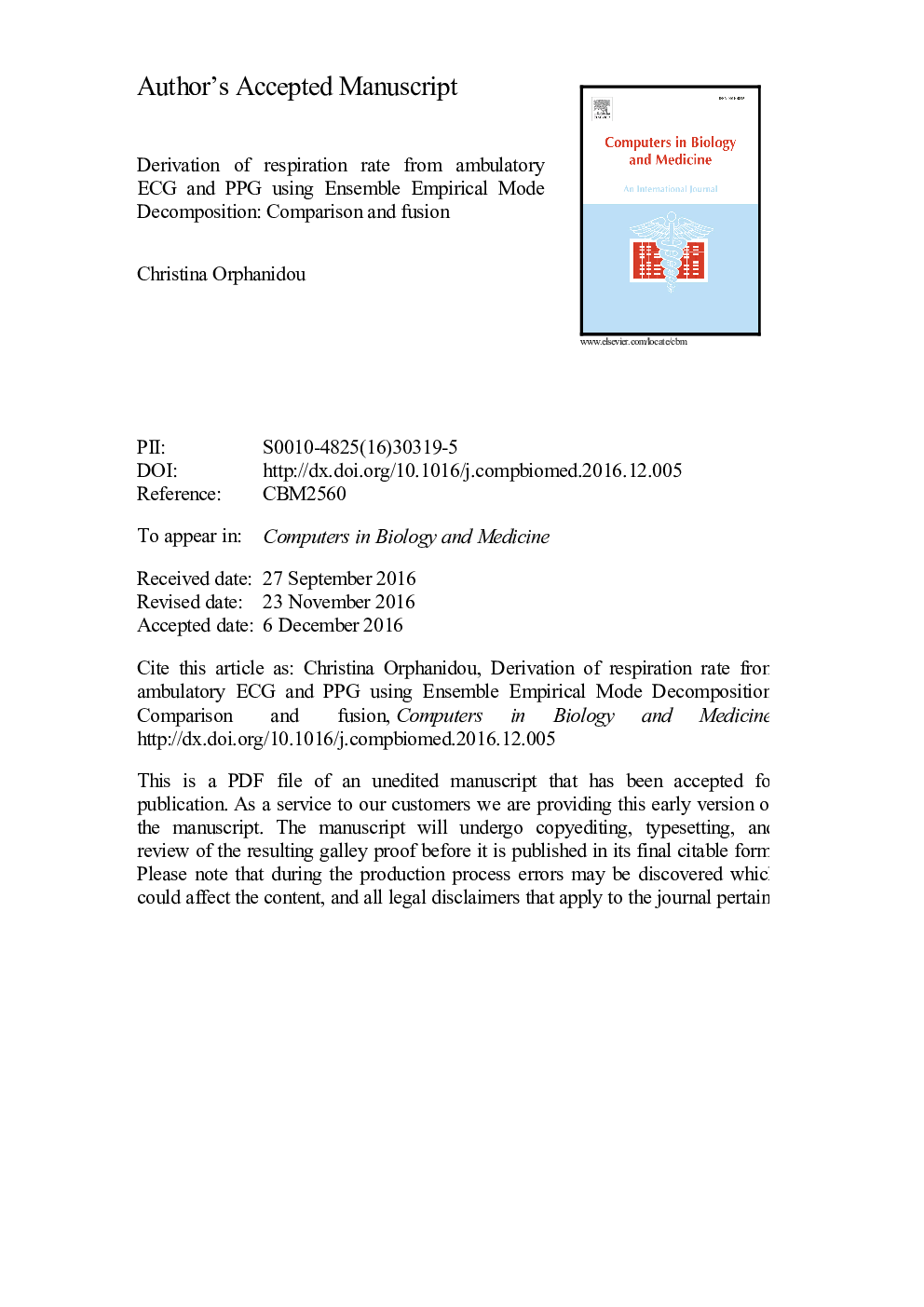| Article ID | Journal | Published Year | Pages | File Type |
|---|---|---|---|---|
| 4964836 | Computers in Biology and Medicine | 2017 | 36 Pages |
Abstract
A new method for extracting the respiratory rate from ECG and PPG obtained via wearable sensors is presented. The proposed technique employs Ensemble Empirical Mode Decomposition in order to identify the respiration “mode” from the noise-corrupted Heart Rate Variability/Pulse Rate Variability and Amplitude Modulation signals extracted from ECG and PPG signals. The technique was validated with respect to a Respiratory Impedance Pneumography (RIP) signal using the mean absolute and the average relative errors for a group ambulatory hospital patients. We compared approaches using single respiration-induced modulations on the ECG and PPG signals with approaches fusing the different modulations. Additionally, we investigated whether the presence of both the simultaneously recorded ECG and PPG signals provided a benefit in the overall system performance. Our method outperformed state-of-the-art ECG- and PPG-based algorithms and gave the best results over the whole database with a mean error of 1.8Â bpm for 1Â min estimates when using the fused ECG modulations, which was a relative error of 10.3%. No statistically significant differences were found when comparing the ECG-, PPG- and ECG/PPG-based approaches, indicating that the PPG can be used as a valid alternative to the ECG for applications using wearable sensors. While the presence of both the ECG and PPG signals did not provide an improvement in the estimation error, it increased the proportion of windows for which an estimate was obtained by at least 9%, indicating that the use of two simultaneously recorded signals might be desirable in high-acuity cases where an RR estimate is required more frequently.
Keywords
Related Topics
Physical Sciences and Engineering
Computer Science
Computer Science Applications
Authors
Christina Orphanidou,
